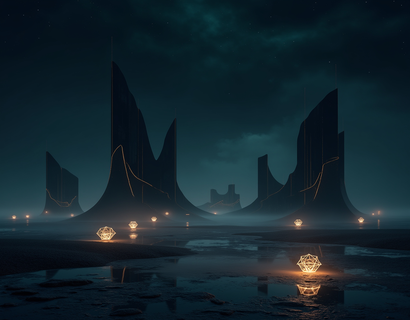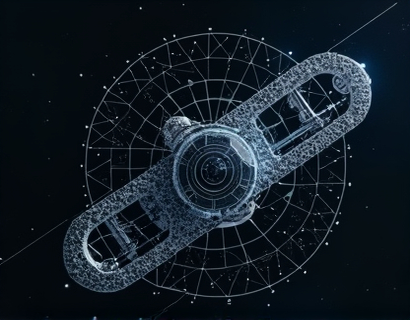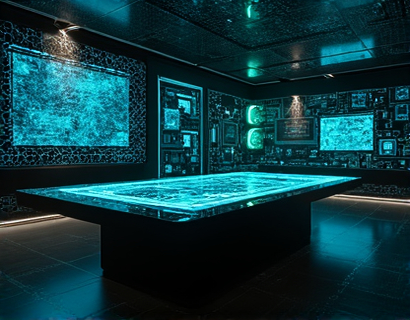Unlocking Ancient Wisdom: A Modern Guide to Historical Insights and Cultural Heritage
In an era where the pace of life often overshadows the richness of our past, there is a profound need to reconnect with the ancient wisdom and cultural heritage that have shaped our world. This guide aims to bridge the gap between historical insights and modern understanding, offering a comprehensive exploration of the timeless teachings and profound knowledge embedded in our shared history. Whether you are a history enthusiast, a cultural explorer, or simply someone seeking to deepen your appreciation of the past, this guide will provide valuable insights and perspectives that resonate with contemporary life.
The journey into ancient wisdom begins with an acknowledgment of the vast and diverse civilizations that have contributed to the tapestry of human history. From the monumental architecture of the Egyptians to the philosophical musings of the Greeks, each culture has left an indelible mark on our collective heritage. This guide will delve into the key aspects of these civilizations, highlighting their achievements, beliefs, and the lessons they offer us today.
Understanding Ancient Civilizations
The ancient Egyptians, for instance, were masters of engineering and art, building structures like the Pyramids of Giza that stand as testaments to their ingenuity and spiritual depth. Their hieroglyphs, though complex, provide a window into their religious practices, social structures, and daily life. The Egyptians believed in an afterlife, which influenced their burial practices and the construction of elaborate tombs filled with artifacts meant to sustain the deceased in the next world. This belief system underscores the importance of legacy and the continuity of life, lessons that remain relevant in our modern quest for meaning and purpose.
Moving to the Indus Valley Civilization, we find a society that excelled in urban planning and sanitation. The cities of Harappa and Mohenjo-Daro were remarkably advanced for their time, with well-planned streets, drainage systems, and public baths. The Indus people also had a sophisticated trade network, indicating a high level of economic organization. Their seals and artifacts suggest a complex social hierarchy and a deep connection to nature, reminding us of the importance of sustainable living and community well-being.
Philosophical and Spiritual Insights
Beyond material achievements, ancient cultures offer profound philosophical and spiritual insights. The Greeks, for example, made significant contributions to philosophy, science, and the arts. Figures like Socrates, Plato, and Aristotle explored fundamental questions about existence, ethics, and knowledge. Their dialogues and writings continue to influence modern thought, encouraging critical thinking and self-reflection. The Greek concept of the "examined life" emphasizes the importance of personal growth and the pursuit of virtue, lessons that are as pertinent today as they were over two millennia ago.
In the East, the philosophies of Buddhism and Taoism provide a different perspective on life and the universe. Buddhism, founded by Siddhartha Gautama (the Buddha), teaches the path to enlightenment through the Four Noble Truths and the Eightfold Path. These teachings focus on the cessation of suffering and the cultivation of mindfulness and compassion. Taoism, with its emphasis on living in harmony with the natural world and the concept of Wu Wei (non-action or effortless action), offers a holistic approach to life that promotes balance and inner peace. Both philosophies encourage a deep connection with oneself and the environment, promoting a sense of interconnectedness that is increasingly relevant in our globalized world.
Art and Architecture
The artistic and architectural achievements of ancient civilizations are not only marvels of human creativity but also windows into their cultural values and spiritual beliefs. The Parthenon in Athens, for example, is a masterpiece of Doric architecture, symbolizing the ideals of democracy and civic pride. Its intricate friezes and sculptures depict mythological scenes and historical events, reflecting the Greeks' reverence for their gods and their history. Similarly, the temples of Angkor Wat in Cambodia showcase the grandeur of Khmer architecture, with detailed carvings that narrate epic tales from Hindu mythology. These structures are more than just buildings; they are embodiments of the cultural and spiritual aspirations of their creators.
In Mesoamerica, the Mayan pyramids and temples, such as those at Chichen Itza, combine religious significance with astronomical precision. The Pyramid of Kukulcan, also known as El Castillo, aligns with the solar calendar, marking the equinoxes with the serpent-like shadow of the serpent god Kukulcan. This integration of architecture and astronomy demonstrates the Mayans' advanced understanding of the cosmos and their belief in the divine order of the universe. These monuments serve as a reminder of the deep connection between human creativity and the natural world.
Preserving and Interpreting Ancient Knowledge
Preserving and interpreting ancient knowledge is a complex but crucial task. Archaeologists, historians, and cultural scholars employ various methods to uncover and understand the remnants of past civilizations. Excavations, artifact analysis, and textual studies are fundamental to this process. However, the interpretation of ancient texts and artifacts often requires a multidisciplinary approach, drawing on fields such as linguistics, anthropology, and environmental science.
One of the challenges in preserving ancient knowledge is the degradation of physical artifacts over time. Climate change, natural disasters, and human activity pose significant threats to archaeological sites and museums. Efforts to conserve and restore these sites are ongoing, with technologies like 3D scanning and digital archiving playing an increasingly important role. These tools allow for the detailed documentation and preservation of artifacts, making them accessible to a global audience while minimizing physical handling.
Interpreting ancient texts presents its own set of challenges. Many ancient languages have been lost or are only partially understood, requiring scholars to piece together meanings from context and comparative analysis. The decipherment of scripts like Linear B, which revealed the Mycenaean Greek language, is a testament to the perseverance and ingenuity of researchers. Such breakthroughs not only enhance our understanding of the past but also highlight the dynamic nature of knowledge and interpretation.
Relevance to Modern Life
The lessons from ancient wisdom are not merely academic curiosities; they offer practical insights for modern life. The emphasis on community and collective well-being in many ancient cultures can inform contemporary discussions on social cohesion and sustainability. The Greek concept of the polis, or city-state, where citizens actively participated in governance, resonates with modern democratic ideals. Similarly, the indigenous practices of living in harmony with nature provide a model for sustainable development and environmental stewardship.
The philosophical teachings of ancient thinkers continue to influence modern ethics and moral philosophy. The Stoic emphasis on resilience and self-control, for example, is relevant in today's fast-paced and often stressful world. Mindfulness practices rooted in Buddhist and Taoist traditions have gained popularity in the West as effective tools for stress reduction and mental well-being. These ancient practices offer a counterbalance to the rapid pace of modern life, promoting inner peace and clarity.
Cultural Heritage and Identity
Cultural heritage plays a vital role in shaping individual and collective identities. Understanding and appreciating the history and traditions of different cultures fosters respect and empathy, essential components of a harmonious society. Cultural heritage sites, traditions, and artifacts serve as tangible links to the past, providing a sense of continuity and belonging. They also offer educational opportunities, allowing people to learn about and engage with diverse histories and perspectives.
Preserving cultural heritage is not just about protecting physical sites and artifacts; it involves safeguarding intangible aspects such as languages, rituals, and traditional knowledge. Efforts to document and revitalize endangered languages, for instance, help maintain cultural diversity and ensure that future generations can connect with their heritage. Cultural festivals, traditional crafts, and oral histories are all vital components of this living heritage, enriching our lives in countless ways.
Conclusion
Unlocking ancient wisdom and cultural heritage is a journey that enriches our understanding of the world and our place in it. By exploring the achievements, beliefs, and teachings of past civilizations, we gain valuable insights that can guide us in addressing contemporary challenges. This guide has highlighted the importance of preserving and interpreting ancient knowledge, emphasizing its relevance to modern life. Whether through the grandeur of ancient architecture, the depth of philosophical thought, or the simplicity of sustainable practices, the past offers a wealth of wisdom that continues to inspire and inform us today.










































